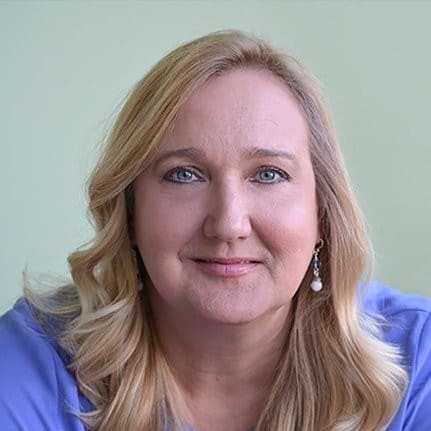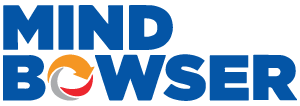Medicare Chronic Care Management (CCM) in 2025 is shifting with APCM G-codes, new supervision rules, and expanded billing for FQHCs/RHCs. For CTOs, the challenge is operationalizing eligibility, consent, audit documentation, and interoperability. This playbook demonstrates how to develop CCM technology that passes compliance checks, scales engagement, and delivers a measurable ROI.
Medicare’s Chronic Care Management program has matured into a central pillar of outpatient care. In 2025, more than two-thirds of beneficiaries live with two or more chronic conditions, making coordinated care a necessity rather than an option. To address this demand, CMS has broadened reimbursement, added Advanced Primary Care Management (APCM) G-codes, and extended billing rights to Federally Qualified Health Centers (FQHCs) and Rural Health Clinics (RHCs).
For technology leaders, the challenge is no longer just to enable billing. CTOs are being asked to build systems that automate compliance, surface real-time audit evidence, and ensure interoperability across Epic, Cerner, Athena, and emerging mid-tier EHRs. Unlike point solutions, these builds must anchor on Medicare’s requirements for eligibility, consent, and continuity of care, while also driving measurable ROI in readmission reduction and patient engagement.
At the same time, CIOs and CFOs are asking pointed questions. How can enrollment and minutes-tracking scale without overburdening staff? How do we avoid double-counting when Chronic Care Management overlaps with Remote Patient Monitoring or Behavioral Health Integration? And how do we prove the financial lift — both in Medicare reimbursement and avoided acute utilization — to the board?
This playbook is written for CTOs who need to answer those questions with a clear architecture. It is less about the mechanics of CPT codes and more about how to operationalize them through workflow automation, audit documentation packs, and accelerator-driven solutions that integrate directly into clinical systems.
Medicare defines Chronic Care Management eligibility for patients who have two or more chronic conditions that are expected to last at least 12 months or until the end of life. These conditions must pose a significant risk of death, acute exacerbation, or functional decline if not properly managed.
For CTOs, the eligibility definition translates into a data problem. The care team cannot rely on manual chart reviews to identify patients. Instead, eligibility should be driven by structured data: ICD-10 problem lists, medication histories, lab values, and utilization trends. Systems need automated rules to flag eligible patients each month, ideally through a real-time query to the EHR.
Medicare requires that patients give informed consent before enrollment. Consent can be obtained verbally or in writing, but it must be documented in the medical record. This creates both a compliance and workflow challenge. For technology leaders, the solution is embedding consent capture into the enrollment workflow.
When a patient is first approached, a digital consent form or structured consent note should be captured directly in the EHR. Audit trails must link the consent event to the patient’s record, date, and the staff member responsible. Consent is not a one-time checkbox; if a patient revokes participation, that action also needs to be logged with the same level of detail.
A critical Medicare requirement is that patients receive continuity of care from a designated clinician or care team. This rule is designed to prevent fragmented delivery across multiple providers. In practice, this means that all monthly CCM activities must be attributed to the same care team within the system.
For CTOs, continuity is best managed through EHR role assignments and team structures. The system must prevent minutes logged by an external group from being attributed to the primary care team unless a clear delegation and billing arrangement is in place.
Eligibility, consent, and continuity requirements create an opportunity for automation. Manual spreadsheets or phone logs will not withstand an audit. Instead, CTOs should focus on:
One way to simplify this layer is through accelerators that compress documentation time. AI Medical Summary can automatically generate structured eligibility and history packs from the patient record. This reduces manual review and ensures that patients flagged for CCM meet the required criteria. It also standardizes the data foundation for billing and audit preparation.
A practical example comes from a health system initiative. The organization struggled with elderly patients missing enrollment opportunities due to inconsistent consent documentation. By embedding digital consent forms within a new remote monitoring platform, patient approvals were automatically logged into the record.
The same platform captured vital signs and visit data, reducing manual entry and providing a single view of eligibility and continuity. The outcome was significant: more than 90% patient engagement and twice the speed in generating compliance-ready reports for administrators.
Medicare’s Chronic Care Management services have traditionally been billed through CPT codes that reflect the time and complexity of care delivered.
These CPT codes anchor most hospital and clinic CCM programs. For CTOs, they represent the rules that billing engines and workflow systems must respect. The technical challenge is ensuring that time tracking, care plan updates, and staff assignments are mapped to the correct CPT code each month without requiring manual reconciliation.
In 2025, CMS added Advanced Primary Care Management (APCM) G-codes to broaden reimbursement and simplify billing in certain cases. Instead of being tied strictly to time thresholds, the G-codes align payment with patient complexity and the level of care team involvement.
For hospitals and clinics, the shift means some patients who were previously captured under time-based CPT codes can now be managed and billed under complexity-based G-codes. For technology leaders, the implication is clear: billing logic cannot be linear. Systems must support branching logic where patient complexity, not just tracked minutes, determines the correct billing path.
Federally Qualified Health Centers and Rural Health Clinics historically billed CCM through the general G0511 code, which covered a broad range of care management activities. Beginning in 2025, CMS aligned FQHC and RHC billing with the standard CPT and APCM code structure.
This means that rural providers can now bill the same detailed codes as hospital systems, eliminating a two-tier reimbursement structure. The policy shift creates both opportunity and complexity. FQHC and RHC leaders must ensure their EHR systems and revenue cycle platforms can now accommodate CPT code families and G-code logic, not just a single flat rate.
For CTOs, the coding shifts introduce a need for configurable billing engines. A modern approach requires:
Related read: Chronic Care Management CPT Codes: A Practical Guide For CTOs To Unlock Revenue, Quality, and Audit Readiness
A large health system needed greater precision in how it applied CCM codes. By integrating a financial assistance automation tool directly into its Epic environment using HL7 and FHIR APIs, the system could map patient demographics, diagnoses, and insurance coverage in real time.
For Chronic Care Management, patients with higher social complexity were automatically flagged for G0558 billing instead of lower-reimbursement CPT codes. The automation cut manual data entry by 90% and eliminated coding errors that often triggered audits or resulted in denied claims.
Medicare allows Chronic Care Management services to be billed under “incident-to” rules when staff provide the service under the supervision of a physician or qualified healthcare professional. This means nurses, care managers, or other licensed staff can perform the monthly outreach and care coordination, but the billing must be tied to the supervising clinician. The supervising provider is ultimately responsible for ensuring compliance with program requirements.
From a technical perspective, this creates a data lineage issue. The system must track which staff member performed each activity and which physician or qualified provider is supervising. Without that linkage, audits can flag services as improperly billed.
Medicare recognizes several levels of supervision, and in 2025, clarifications were made for care management codes:
For most CCM and APCM services, general supervision is sufficient. This flexibility enables virtual care teams and remote work arrangements, but it also requires precise system mapping. If supervision defaults are coded incorrectly, services may appear to have been delivered outside the scope of Medicare rules.
Technology leaders should design EHR workflows and scheduling systems to explicitly map staff activities to supervising providers. This requires:
By making supervision explicit in the system, organizations can reduce compliance risk and simplify audit reporting.
One solution to this problem is deploying accelerators that surface supervision requirements within the EHR workflow. HealthConnect CoPilot integrates with Epic, Cerner, and Athena systems to embed prompts during task creation. When a nurse logs CCM outreach, the system automatically prompts for supervising provider assignment and flags inconsistencies before claims are generated. This prevents downstream denials and saves administrative staff from having to correct claims after submission.
A large health network found that nearly 15% of its CCM claims were being delayed because of incomplete supervision documentation. By configuring its system to enforce supervising provider assignment at the point of documentation, the delay was eliminated. Billing teams no longer had to chase providers for confirmation after the fact. The change accelerated cash flow and reduced the likelihood of repayment demands after audit reviews.
Move beyond billing enablement. Automate eligibility, consent, and supervision compliance across your EHR ecosystem — and show measurable financial and quality outcomes.
Medicare reimburses Chronic Care Management services with the expectation that providers can produce a complete record of eligibility, patient engagement, and supervision. When audits occur, the burden of proof is entirely on the organization.
Missing documentation is treated as noncompliance, which can lead to repayment demands or penalties. For CTOs, this is not a clerical issue but a systems design problem. The goal should be to standardize how data is captured, stored, and retrieved across the enterprise.
Related read: Mastering Complex CCM (99487/99489): Documentation, ROI, and Audit Readiness
A proper CCM documentation bundle must include:
Technology leaders should not rely on ad hoc reporting at audit time. Instead, systems should automatically generate structured documentation packs at the end of each billing cycle. This can be done by:
Two accelerators are particularly effective at strengthening audit readiness:
One health system provides a clear example of how automation can transform compliance workflows. Providers previously spent hours consolidating notes, vitals, and patient communications into audit-ready files.
After implementing an AI-driven documentation system, provider documentation time was reduced by 70%, follow-up tasks were completed 60% faster, and care coordination improved by 30%. Most importantly, when auditors requested records, the system could generate patient-specific documentation packs in minutes instead of weeks.
An audit pack should not be a one-off report created during a compliance review. It should be a standing artifact that is automatically produced every month for every patient enrolled in CCM. By building this into the system design, CTOs not only reduce audit risk but also increase confidence among finance and compliance leaders that CCM revenue is reliable and defensible.
Hospitals have the infrastructure, staff, and technology resources to support large-scale Chronic Care Management programs. Yet the complexity of hospital operations creates unique challenges.
Integration with enterprise EHR platforms, such as Epic and Cerner, often requires custom workflows to track time, consent, and supervision consistently across multiple departments. In many systems, CCM is layered on top of transitional care management, behavioral health integration, and remote patient monitoring, which increases the risk of billing conflicts.
From a CTO perspective, hospitals must design systems that can reconcile overlapping services. This involves implementing concurrency checks, creating unified care plan repositories, and embedding billing logic that can detect when multiple care management codes are applied to the same patient within a single month.
Hospitals also face staffing complexities, since CCM work is frequently distributed across nursing teams, case managers, and virtual care coordinators. The technical challenge is ensuring that each unit’s contributions roll up under the correct supervising provider and billing pathway.
Federally Qualified Health Centers and Rural Health Clinics have historically been reimbursed for care management under a flat-rate G-code (G0511). That structure limited the ability to capture patient complexity and often underpaid providers caring for patients with higher needs. In 2025, CMS updated the policy so that FQHCs and RHCs can now bill using the same CPT and APCM codes as hospitals and private practices. This represents a significant shift that creates both opportunities and responsibilities.
For rural providers, the change increases potential reimbursement but also requires significant updates to billing systems. These organizations must now track and document care management minutes, complexity levels, and care plans with the same rigor as larger hospital systems. Without automated workflows, smaller clinics risk noncompliance or missed revenue opportunities.
The difference in scale between hospitals and FQHCs means technology leaders should design billing systems with dual-mode capability. For enterprise hospitals, the system must manage high-volume complexity across multiple service lines, while for FQHCs, the focus should be on simplicity and automation. A dual-mode billing engine can:
A community-focused health initiative shows how technology can bridge gaps across different care settings. By collecting structured data on housing, food insecurity, and transportation, clinics were able to create more complete care plans for underserved populations. The result was a 67% reduction in emergency room visits and stronger chronic care planning. For hospitals, the same system consolidated clinical and social data into a unified patient view. For FQHCs, it offered a lightweight method to document complexity factors that directly align with APCM billing codes.
Hospitals must prioritize scale and interoperability, while FQHCs must prioritize automation and ease of use. Both settings now play under the same reimbursement structure, which means both require technology that can produce clean audit records and defensible claims. The systems that succeed will be those that combine configurability for enterprise demands with simplicity for resource-constrained clinics.
Related read: CCM Compliance Automation: Why Hospitals and Startups Can No Longer Rely on Manual Workflows
Despite clear rules, many organizations struggle with CCM billing compliance. The most frequent errors include:
Related read: CCM Billing 2025: Codes, APCM & ROI
Technology leaders can address these errors by embedding compliance checks into the system rather than relying on staff memory or manual reconciliation.
Related read: CCM Audit Risk & Protection: A Compliance Playbook for 2025
One health network faced frequent readmissions due to gaps in care coordination and inconsistent CCM documentation. By deploying a care optimization platform that integrated EHR, claims, and social data, the organization created a unified workflow. Staff time was automatically attributed to supervising providers, concurrency rules were enforced, and referrals were tracked through a single system.
The result was a 52% reduction in readmissions and more than 250,000 inpatient days avoided. This example highlights how technology can strengthen compliance while producing measurable population health outcomes.
Medication adherence is a critical component of CCM but is often poorly documented. MedAdhere AI automates reminders via SMS, email, or push notifications and tracks patient compliance. By integrating adherence data directly into the care plan, the system eliminates the need for guesswork during audits. It also provides an additional safeguard against under-documenting interventions, ensuring that staff minutes tied to medication support are accurately recorded and billable.
Every pitfall in CCM billing comes down to weak system design. Manual processes invite errors, while automated workflows prevent them. By embedding concurrency checks, structured time logging, and audit dashboards directly into the EHR ecosystem, CTOs can protect revenue and compliance simultaneously. The organizations that succeed in 2025 will be those that treat compliance as a design principle, not an afterthought.
Hospitals and digital health companies are under pressure to deliver compliant Chronic Care Management programs while proving ROI to boards and payers. This requires more than just billing support; it requires building technology that automates compliance, integrates with existing EHRs, and produces defensible audit artifacts every month.
Mindbowser brings three capabilities that directly address these needs:
For CTOs, this means building CCM programs that scale without adding manual burden to clinical teams. For CFOs and compliance officers, it means reliable Medicare revenue supported by airtight documentation. And for patients, it means continuity of care and timely interventions that reduce avoidable hospitalizations.
Related read: Building a Chronic Care Management Program: A 2025 Playbook for Hospitals and Digital Health Leaders

Medicare Chronic Care Management in 2025 is no longer just a billing opportunity. It is a compliance-driven program that demands precise workflows, strong documentation, and technology that can scale across both hospitals and community clinics. The addition of APCM G-codes, expanded FQHC billing rights, and clarified supervision rules require leadership to align clinical operations with technical infrastructure.
For CTOs, the takeaway is clear. Building systems that automate eligibility checks, capture consent in structured formats, enforce continuity of care, and generate audit-ready documentation is now a core responsibility. Without these capabilities, organizations risk denials, repayment demands, and missed revenue opportunities. With them, they gain predictable Medicare revenue streams, a stronger compliance posture, and measurable improvements in patient engagement and readmission reduction.
The organizations that will lead in this space are those that treat CCM as both a compliance requirement and a strategic growth program. By investing in interoperable, API-first platforms and embedding automation into every step of care management, hospitals and digital health companies can turn a regulatory mandate into a competitive advantage.
Patients must have two or more chronic conditions expected to last at least 12 months or until the end of life. The conditions must place the patient at significant risk if unmanaged. Enrollment requires documented patient consent and assignment to a designated care team. Eligibility should be captured through structured data in the EHR to ensure compliance and audit readiness.
CPT codes remain tied to time thresholds, such as 99490 for 20 minutes of staff time. APCM G-codes introduced in 2025, including G0556 through G0558, are based on patient complexity rather than minutes. This means that providers can align reimbursement with the social and medical complexity of patients. Hospitals and clinics must support both coding models and use billing logic to prevent overlap in the same month.
Yes. Hospitals have always billed through CPT codes, while Federally Qualified Health Centers and Rural Health Clinics historically used a flat-rate G-code. In 2025, CMS allowed FQHCs and RHCs to bill through CPT and APCM codes as well. This policy change aligns reimbursement with patient complexity, but it requires smaller clinics to upgrade workflows and billing systems to handle more detailed code structures.
An audit-ready pack must include patient consent records, an updated care plan, a log of time spent on care management, care team notes, and proof that services were not double-counted with other programs, such as remote patient monitoring or behavioral health integration. These records should be standardized and generated automatically through the EHR, ensuring every claim is defensible during audit review.
Common mistakes include billing 99490 and 99491 in the same month, missing add-on codes, poor time tracking, and double-counting CCM minutes with other services. These errors reduce revenue and increase audit risk. To avoid them, organizations should implement concurrency checkers, structured time logging, and audit dashboards within the EHR. Automated alerts help staff document care correctly and prevent denials.

We worked with Mindbowser on a design sprint, and their team did an awesome job. They really helped us shape the look and feel of our web app and gave us a clean, thoughtful design that our build team could...


The team at Mindbowser was highly professional, patient, and collaborative throughout our engagement. They struck the right balance between offering guidance and taking direction, which made the development process smooth. Although our project wasn’t related to healthcare, we clearly benefited...

Founder, Texas Ranch Security

Mindbowser played a crucial role in helping us bring everything together into a unified, cohesive product. Their commitment to industry-standard coding practices made an enormous difference, allowing developers to seamlessly transition in and out of the project without any confusion....

CEO, MarketsAI

I'm thrilled to be partnering with Mindbowser on our journey with TravelRite. The collaboration has been exceptional, and I’m truly grateful for the dedication and expertise the team has brought to the development process. Their commitment to our mission is...

Founder & CEO, TravelRite

The Mindbowser team's professionalism consistently impressed me. Their commitment to quality shone through in every aspect of the project. They truly went the extra mile, ensuring they understood our needs perfectly and were always willing to invest the time to...

CTO, New Day Therapeutics

I collaborated with Mindbowser for several years on a complex SaaS platform project. They took over a partially completed project and successfully transformed it into a fully functional and robust platform. Throughout the entire process, the quality of their work...

President, E.B. Carlson

Mindbowser and team are professional, talented and very responsive. They got us through a challenging situation with our IOT product successfully. They will be our go to dev team going forward.

Founder, Cascada

Amazing team to work with. Very responsive and very skilled in both front and backend engineering. Looking forward to our next project together.

Co-Founder, Emerge

The team is great to work with. Very professional, on task, and efficient.

Founder, PeriopMD

I can not express enough how pleased we are with the whole team. From the first call and meeting, they took our vision and ran with it. Communication was easy and everyone was flexible to our schedule. I’m excited to...

Founder, Seeke

We had very close go live timeline and Mindbowser team got us live a month before.

CEO, BuyNow WorldWide

Mindbowser brought in a team of skilled developers who were easy to work with and deeply committed to the project. If you're looking for reliable, high-quality development support, I’d absolutely recommend them.

Founder, Teach Reach

Mindbowser built both iOS and Android apps for Mindworks, that have stood the test of time. 5 years later they still function quite beautifully. Their team always met their objectives and I'm very happy with the end result. Thank you!

Founder, Mindworks

Mindbowser has delivered a much better quality product than our previous tech vendors. Our product is stable and passed Well Architected Framework Review from AWS.

CEO, PurpleAnt

I am happy to share that we got USD 10k in cloud credits courtesy of our friends at Mindbowser. Thank you Pravin and Ayush, this means a lot to us.

CTO, Shortlist

Mindbowser is one of the reasons that our app is successful. These guys have been a great team.

Founder & CEO, MangoMirror

Kudos for all your hard work and diligence on the Telehealth platform project. You made it possible.

CEO, ThriveHealth

Mindbowser helped us build an awesome iOS app to bring balance to people’s lives.

CEO, SMILINGMIND

They were a very responsive team! Extremely easy to communicate and work with!

Founder & CEO, TotTech

We’ve had very little-to-no hiccups at all—it’s been a really pleasurable experience.

Co-Founder, TEAM8s

Mindbowser was very helpful with explaining the development process and started quickly on the project.

Executive Director of Product Development, Innovation Lab

The greatest benefit we got from Mindbowser is the expertise. Their team has developed apps in all different industries with all types of social proofs.

Co-Founder, Vesica

Mindbowser is professional, efficient and thorough.

Consultant, XPRIZE

Very committed, they create beautiful apps and are very benevolent. They have brilliant Ideas.

Founder, S.T.A.R.S of Wellness

Mindbowser was great; they listened to us a lot and helped us hone in on the actual idea of the app. They had put together fantastic wireframes for us.

Co-Founder, Flat Earth

Mindbowser was incredibly responsive and understood exactly what I needed. They matched me with the perfect team member who not only grasped my vision but executed it flawlessly. The entire experience felt collaborative, efficient, and truly aligned with my goals.

Founder, Child Life On Call

The team from Mindbowser stayed on task, asked the right questions, and completed the required tasks in a timely fashion! Strong work team!

CEO, SDOH2Health LLC

Mindbowser was easy to work with and hit the ground running, immediately feeling like part of our team.

CEO, Stealth Startup

Mindbowser was an excellent partner in developing my fitness app. They were patient, attentive, & understood my business needs. The end product exceeded my expectations. Thrilled to share it globally.

Owner, Phalanx

Mindbowser's expertise in tech, process & mobile development made them our choice for our app. The team was dedicated to the process & delivered high-quality features on time. They also gave valuable industry advice. Highly recommend them for app development...

Co-Founder, Fox&Fork
